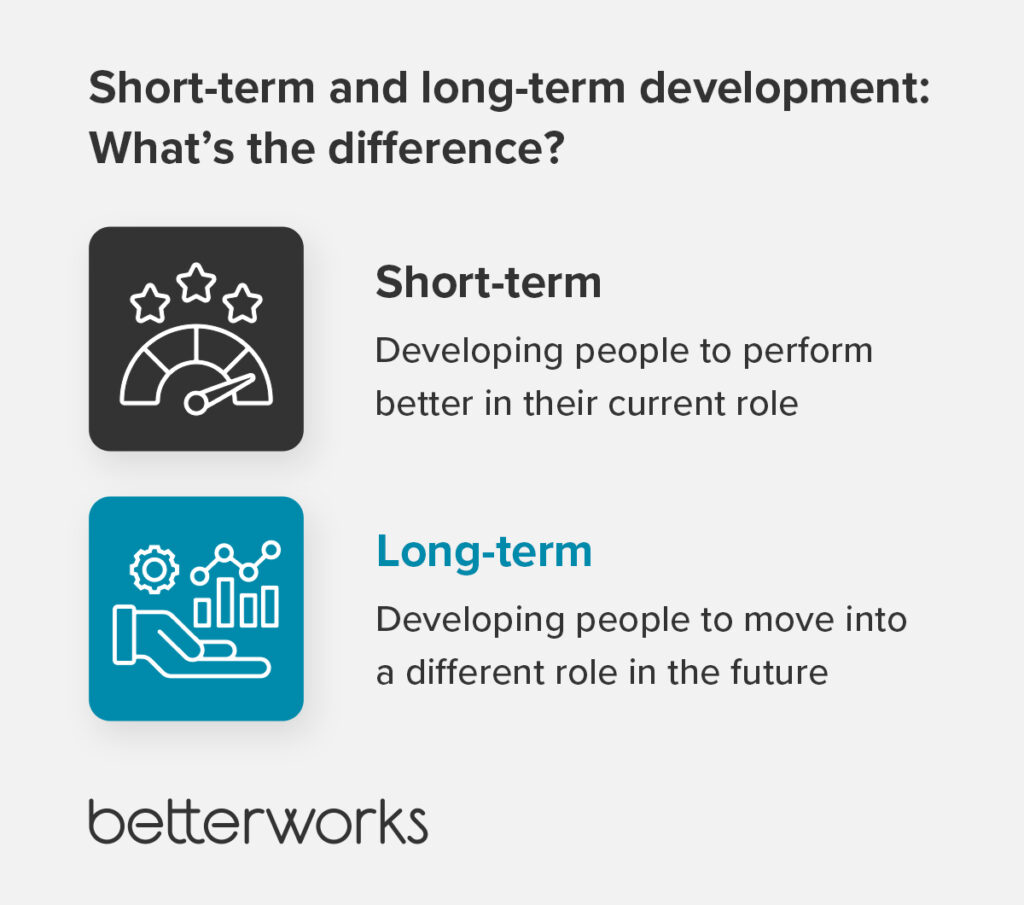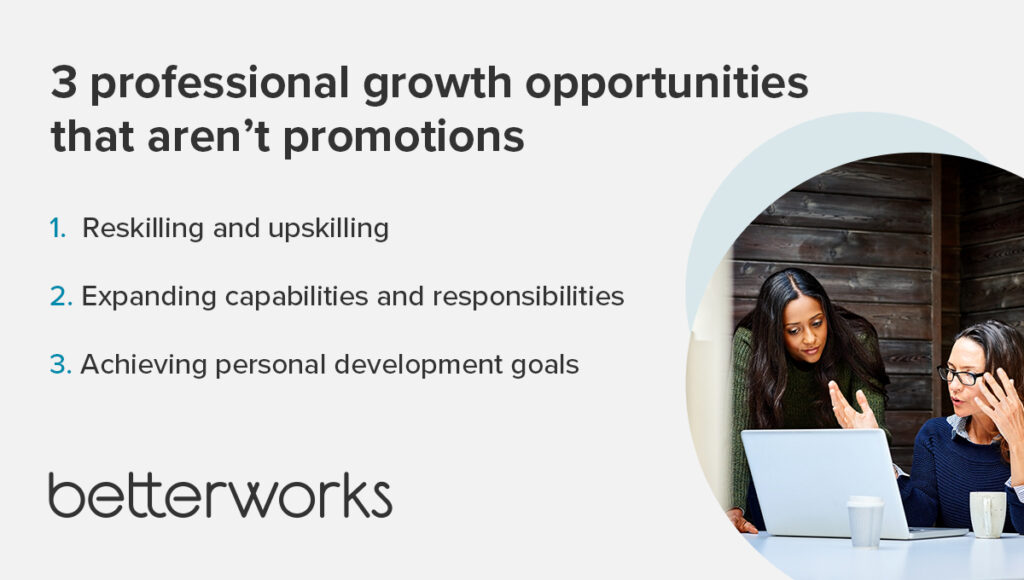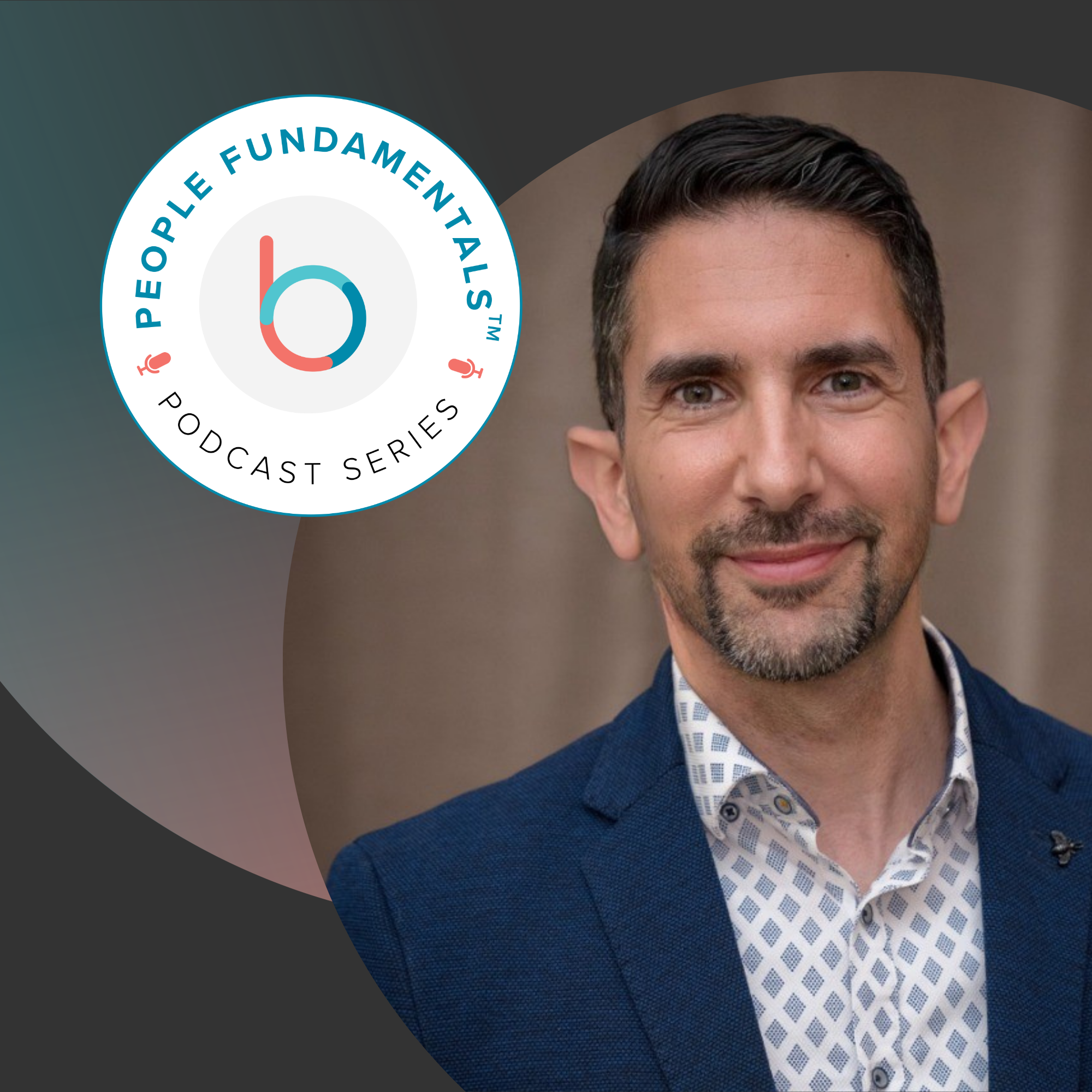Today’s managers need to know how to help employees grow and reach their fullest potential within the organization. However, this can be challenging when there are limited opportunities for advancement within the company.
Employees want to grow within your company, according to our 2023 State of Performance Enablement report. Three-quarters of employees prefer to stay and grow where they are, but only 40% see a clear career path, and only 46% report feeling supported in their career development.
Historically, we’ve conflated career development with moving up the ladder. But today’s organizations are increasingly less hierarchical and have fewer layers of management. This means that even among top performers, fewer receive promotions, while average or low performers have even less likelihood of moving up.
“Naturally, over decades, we built this ingrained culture where if you don’t get promoted, then you’re not as valuable to the organization,” says Caitlin Collins, organizational psychologist and program strategy director at Betterworks. “Now we’re trying to break that paradigm.”
Employees don’t need to be in line for a promotion to feel like they’re progressing in their careers.
Discover how to help employees grow within the company — even when it feels like there’s no room for advancement.
The challenge: Retaining talent when there are no promotion opportunities at work
There are many reasons a company can’t promote most employees. If the organization is restructuring, for example, it may streamline job roles rather than add management layers. Or a company may be in a period of transition and looking to cut middle management.
Your inability to offer advancement opportunities to employees can lead to feelings of stagnation and discouragement. They may become apathetic and lose the motivation to perform at their best — putting business outcomes at risk.
Of course, there are countless ways to develop employees, but because we associate development with promotions, managers may struggle to help employees recognize alternatives. “As a manager, if I’m helping create development plans for my direct reports, the next question after they achieve those milestones is, ‘When do I get to benefit from the effort I’ve put into this?’” Collins says. Managers who can’t give an easy answer will often avoid the question entirely.
“Not having the right tools to be able to communicate how this applies even when there’s no openings, or making sure this is a positive value add for employees without having structured guidance, makes it a difficult path to go down,” Collins says. As a result, employees may not receive the development they need to remain engaged.
2 ways to think about professional development
While there are countless paths to employee development, consider these two focuses. Help managers understand the difference between each so they can explain it to their reports.
Short-term development
Short-term development, Collins says, refers to developing people to perform better in their current role. An employee on the marketing team, for example, might benefit from data analytics training to better interpret how campaigns are performing by channel and against targets.
Long-term development
Long-term development, Collins continues, falls under an employee’s career development plan and focuses on preparing workers to move into future roles. Succession planning is a good example of this, as employees prepare to take on higher-level leadership responsibilities even when there’s no exact timetable for changing roles. Furthermore, this helps the company train the staff to grow into engaged and autonomous employees.

3 professional growth opportunities besides promotions
Promotions aren’t the only way to help your team grow professionally. Your day-to-day work provides countless chances for team members to learn and grow. Learn about three ways to advance short- and long-term employee development here and now.
Reskilling and upskilling
Reskilling refers to the process of teaching a person new skills to replace skills that have become obsolete or are no longer in demand. This process helps employers keep workers up to date with changing technology and industry trends.
Upskilling refers to the process of teaching a person skills to supplement and enhance their existing skill set. This process helps workers remain competitive in their current job role or industry. Upskilling can also help workers show they’re ready to move up in their career.
Both types of skills training can help workers in their current roles and in the future. HR leaders and managers should clearly outline the skills required for each job role — and reassess regularly so that job descriptions stay relevant as the way we work changes. Assess each person’s current skill mastery to identify their strengths and opportunities for improvement. From there, train managers to help team members identify on-the-job opportunities to reskill and upskill.
For example, you want customer service representatives to improve so they can provide advanced technical support. Upskilling could include formal training on troubleshooting customer issues or using specific software so they can provide a higher level of customer service.
Expanding capabilities and responsibilities
Strategic HR planning relies on building new capabilities across your workforce. Employees can expand their capabilities by taking on new challenges. One way to do this is by collaborating with colleagues on projects. A level one engineer, for instance, can shadow a higher-level colleague to learn how to address complex issues.
Another way employees can expand their capabilities is by taking initiative in their current role. Instead of only performing assigned tasks, these workers should be encouraged to contribute ideas that improve efficiency, address problems in new ways, or raise concerns before they become a problem. In this case, for example, a level one engineer can be encouraged to practice root-cause analysis to determine the cause of recurring issues.
Achieving personal development goals
The improvements employees make at work can also help them reach their personal goals, which can improve the employee experience and add a sense of personal accomplishment. To do this, make sure employees can clearly define goals with regards to career advancement, skill development, and types of work. Next, ensure employees can discuss their goals with their managers.
Assess how your organization can help employees further personal goals in alignment with organizational objectives. Possibilities include volunteering for projects aligned with personal objectives, participating in cross-functional teams, or joining committees related to their areas of interest. Continuous learning opportunities offer another avenue for talent development. Encourage employees to attend workshops, webinars, and other training sessions to acquire new skills or expand their knowledge base.

How to help managers have career conversations in difficult times
Managers need to practice a coaching mindset if they want to help employees discover development opportunities, Collins says. Effective coaches listen to what’s not being said, ask exploratory questions, and pay attention to their team members’ motivations and behaviors.
HR has a key role in this process. They’ll train and support managers as they learn to recognize when their direct reports are engaged (or not). They’ll also offer resources that help workers recognize what’s holding back peak performance.
Provide conversation starters to managers
Conversation starters are an effective tool for helping managers have meaningful career conversations even when promotions are scarce. These ice-breakers help managers open up lines of communication where everyone feels safe
Here are some conversation starters to help managers talk about career growth with team members:
- What skills do you feel you could develop to help you reach your career goals?
- What would you like to learn or experience to help you progress in your career?
- What challenges do you think would help you grow professionally?
- What would you like to achieve in the next year to further your career?
- In what ways do you think you could add more value to the team or organization?
Provide managers with structured resources they can use to help identify employee career goals and apply development plans.
Offer L&D resources
Learning and development resources can help managers become better conversationalists with their team members. Microlearning provides short, focused lessons on topics such as active listening, asking open-ended questions, and giving feedback. Managers can include microlearning in their day-to-day routine.
In-house mentoring programs that pair new managers with senior colleagues can help these leaders develop their soft skills and have better employee growth conversations.
Role-playing can also be a valuable learning resource for managers. This type of learning teaches managers how to effectively handle difficult conversations and mitigate potential conflicts. Role-playing also provides a safe space to get it wrong — a key component of effective learning. “Some of these behaviors have to be failed at and practiced over time,” Collins says.
Supply consistent, long-term support from HR
Long-term support from HR can help managers who are trying to learn how to have better conversations with their reports. HR can facilitate training, mentoring, coaching and other resources to help managers develop better communication and management skills.
Every team member will have distinct needs and ways of responding to feedback, and HR can help managers personalize career conversations. Tools like a career growth checklist, for example, can guide managers as they provide tailored support to employees in a trusting environment.
Additionally, HR can provide guidance on handling difficult conversations constructively, such as techniques for de-escalating or defusing tense situations. HR can also provide resources for recognizing and preventing conflict from escalating.
Help employees grow to help your business grow
While promotions may not always be available, organizations can still drive business growth and retain employees through meaningful and proactive development conversations. When HR leaders show managers how to help employees grow through conversations focused on skill enhancement, goal setting, and individual aspirations, they help managers harness the workforce’s full potential.
Remember that professional development journeys are continuous. By championing regular career conversations, HR leaders and managers create a more skilled, motivated, and resilient workforce that isn’t dependent on promotions.
Want to learn more? Check out The Manager’s Ultimate Guide to Great Conversations.






